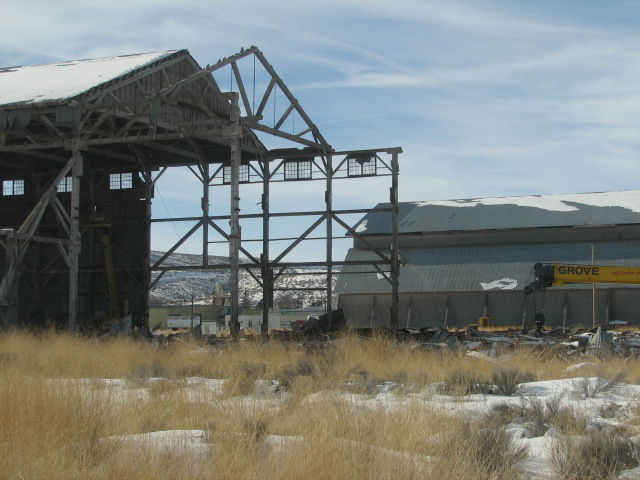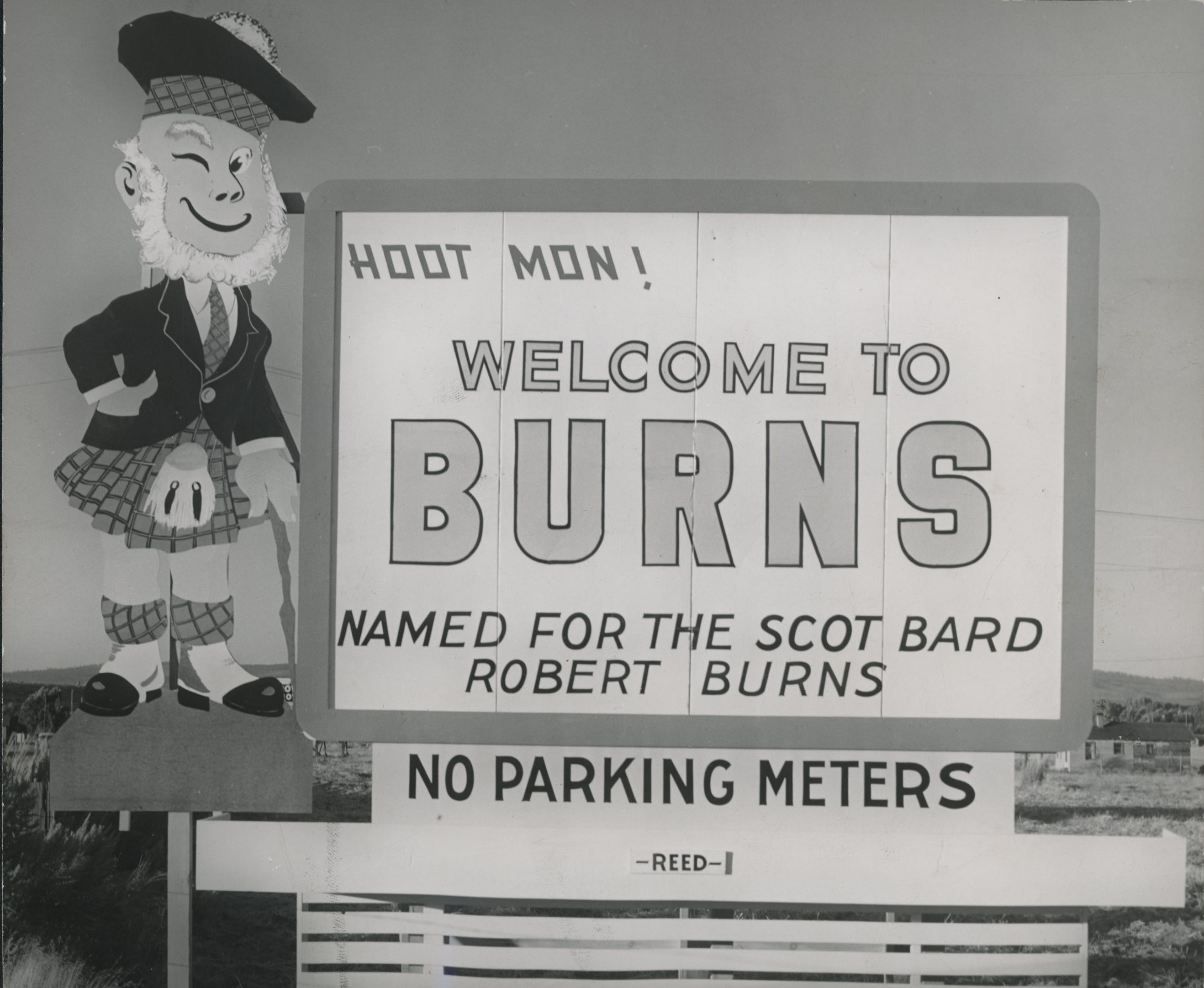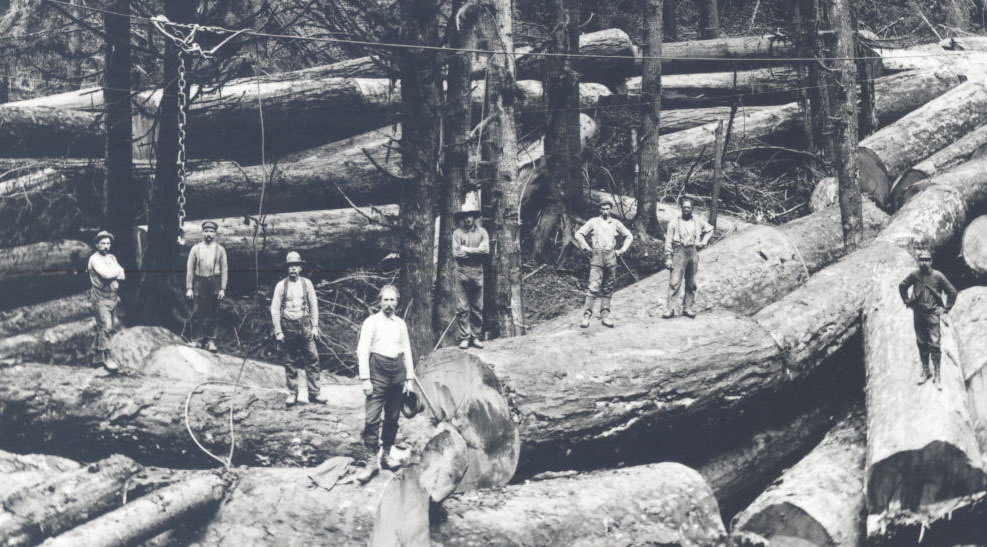In the mid-1920s, large sawmill owners in the United States found a new source of timber in Oregon’s Malheur National Forest. With an estimated 800 million board feet of timber, it was the largest stand of ponderosa pine in the Northwest. The U.S. Department of Agriculture advertised the Malheur timber for sale, and Fred Herrick won the contract with a bid of $2.80 per thousand board feet. As part of the contract, he had to construct a sawmill and a thirty-mile railroad extension from Crane to Burns. He also had to build a fifty-mile common carrier railroad from Burns north into the mountains to access the pine timber near Seneca.
On September 24, 1924, Herrick Lumber Company completed the Malheur Railroad track to Burns but ran into difficulty fulfilling the rest of the contract. Soaring real estate prices in Burns made finding a suitable mill site difficult, and Herrick was unable to meet his deadlines when market slumps caused delays. The sale was re-advertised, and Edward Hines Western Pine Company in Chicago was the successful bidder. In 1928, the company purchased Herrick’s interests in the incomplete railroad and the mill.
Homes were needed for the new employees of the mill, and developers began to lay out a town about two miles southwest of Burns. Edward Hines ordered the first 150 homes built in 1929 and assisted in the design of the new town, which was advertised as "Oregon’s first made-to-order community and one of the first scientifically planned cities undertaken in America.” Loretta Hines, Edward Hines’s wife, helped design the homes and stipulated sixty-eight different architectural plans. No two homes of the same design or color were built next to each other. The heart of the town was a large circular park.
By February 1930, ten homes had been sold. In March, the Burns city council considered annexing the subdivision but was unable to raise the money developers needed to purchase the entire tract. On May 16, by unanimous vote, a group of interested citizens assembled to incorporate and name the new town of Hines. In a special election in December, the people elected a mayor and city council.
The first log had been cut in the new mill on January 27, 1930, but the company struggled during the Great Depression and growth was slow. With the outbreak of World War II, the mill began supplying lumber products for the war effort. After the war, the company focused on the home market and modernized the plant in the early 1950s. In 1954, the town of Hines constructed a municipal sewer system. In 1955, the company’s holdings in Oregon expanded with the purchase of the Oregon Lumber Company operations at Baker, Bates, and Dee. New residential tracts were constructed in Hines during the 1960s.
On January 31, 1963, the Burns Times Herald reported: “1962 Sees Hines Breaking Record.” The mill had shipped 134,250,000 board feet of lumber from the Hines plant, and payroll had reached an all-time high. In the late 1960s, however, union strikes interrupted work at the mills with three strikes in two years.In the 1970s, the company again modernized the operation, but problems developed in the late 1970s with rising timber prices, high wages, and a deteriorating lumber market.
In 1980, the population of Hines was 1,692. That year the Hines Lumber Company began laying off workers after the loss of a bid for federal timber to a sawmill in Prineville. In February, the mill began closing its four divisions, and the stud mill and plywood and veneer plants closed before the end of the year. Regional Manager Gordon Wilson linked the shutdown to the plant’s obsolete equipment, which the company estimated would cost more than $15 million to renovate.
By February 1981, Harney County unemployment was over 30 percent, and in June the mill equipment was auctioned off. The sawmill was remodeled and, vastly reduced in size, reopened in November with about 400 workers. In 1983, the Edward Hines Lumber Company sold the last of its Oregon holdings to Snow Mountain Pine Company, thus ending an era that spanned over fifty years.
In 2020, Hines had a population of 1,645 and included the city park, post office, and city government offices. The Emigrant Creek Ranger District office, the Bureau of Land Management, Oregon Fish & Wildlife, and Harney Soil & Water Conservation District are within Hines’s town limits.
-
Hines Lumber Mill.
Hines Lumber Mill Harney County Library, Claire McGill Luce Western History Room
-
Hines Lumber Mill.
Hines Lumber Mill Harney County Library, Claire McGill Luce Western History Room
-
Hines Lumber Mill.
Edward Hines Lumber Mill Barn Harney County Library, Claire McGill Luce Western History Room
-
Hines Lumber Mill.
Hines Lumber Mill Harney County Library, Claire McGill Luce Western History Room
-
City of Hines.
City of Hines Harney County Library, Claire McGill Luce Western History Room
-
Hines Lumber Mill.
Hines Lumber Mill Harney County Library, Claire McGill Luce Western History Room
-
City of Hines.
City of Hines Harney County Library, Claire McGill Luce Western History Room
-
Hines Lumber Mill.
Hines Lumber Mill Harney County Library, Claire McGill Luce Western History Room
Related Entries
-
![Burns]()
Burns
Located in Oregon’s High Desert, Burns is the county seat of Harney Cou…
-
![Company Towns]()
Company Towns
While there have been scores of industrial settlements and communities …
-
![Timber Industry]()
Timber Industry
Since the 1880s, long before the mythical Paul Bunyan roamed the Northw…
Related Historical Records
Map This on the Oregon History WayFinder
The Oregon History Wayfinder is an interactive map that identifies significant places, people, and events in Oregon history.
Further Reading
Nitz, Karen. Harney County. San Francisco, Ca.: Arcadia Publishing, 2008.











